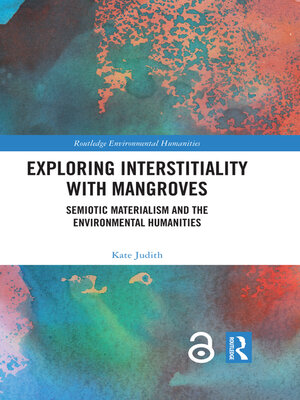Exploring Interstitiality with Mangroves
ebook ∣ Semiotic Materialism and the Environmental Humanities · Routledge Environmental Humanities
By Kate Judith

Sign up to save your library
With an OverDrive account, you can save your favorite libraries for at-a-glance information about availability. Find out more about OverDrive accounts.
Find this title in Libby, the library reading app by OverDrive.



Search for a digital library with this title
Title found at these libraries:
| Library Name | Distance |
|---|---|
| Loading... |
Mangroves thrive in intertidal zones, where they gather organisms and objects from land, river, and ocean. They develop into complex ecologies in these dynamic in-between spaces. Mobilising resources drawn from semiotic materialism and the environmental humanities, this book seeks a form of social theory from the mangroves; that is to think interstitiality from the perspective of mangroves themselves, exploring the crafty and tenacious world-making they are engaged in.
Three sections weave together theory, science and close observation, responding to calls within the environmental humanities for detailed attention to interactions in marginal spaces and those of interpretative tension. It examines interstitiality by considering theories of difference, relationality, and reflexivity in the context of mangrove socioecological materialities, drawing on influential writers such as Michel Serres, Jacques Derrida, Deborah Bird Rose, Donna Haraway, Brian Massumi and Maurice Merleau-Ponty as theoretical touchstones.
Exploring Interstitiality with Mangroves is a lyrically crafted philosophical analysis that will appeal to scholars, researchers and students interested in the developing frontiers of more-than-human post-anthropocentric writing, theory and methodologies. It will be of interest to readers in ecocriticism, environmental humanities, cultural geography, place studies and nature writing.
The Open Access version of the Introduction, available at http://www.taylorfrancis.com/books/e/9781003286493, has been made available under a Creative Commons Attribution-Non Commercial-No Derivatives 4.0 license. The funder for this chapter is the Australian Academy of the Humanities via the Australian Academy of the Humanities Publication Subsidy Scheme







